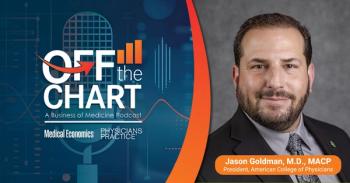
8 lessons we can learn from ants
Discover eight ant-inspired strategies that help physicians elevate teamwork, resilience and efficiency, streamlining medical practice operations while improving patient care and overall practice performance.
“Go to the ant, you sluggard;
consider its ways and be wise!
It has no commander,
no overseer or ruler,
yet it stores its provisions in summer
and gathers its food at harvest."
- Proverbs 6:6-8
I have looked to
1. Have a purpose
Some ants are workers and aim to find food for the colony. This is their only purpose, and they input all their time and energy into this. In our medical practices, we have one overriding goal: to take care of patients. Everything else, including patient satisfaction, online reputation, and collections, is secondary to the goal of providing care for those who come to see us for help. I don't mean to imply that satisfied patients and a doctor's reputation are unimportant. Still, they are secondary to our overriding purpose of caring for our patients.
2. Teamwork
Ants are team workers, working together to achieve something beyond what one ant can do. They work together in highly coordinated colonies, relying on each other's strengths to achieve common goals. Similarly, doctors collaborate with colleagues and other healthcare professionals to deliver comprehensive, integrated care.
Likewise, doctors must align themselves with others who can help propel them to a higher level. A doctor can't answer the phone, make appointments, write prior authorization letters, and focus on patients alone. It takes a team to provide outstanding care for patients.
Staff motivation is paramount to achieving this goal. A two-minute morning huddle can ensure that your staff is on the same page each morning. This meeting with the doctor and the entire staff ensures that everyone is on the same page and working together to create a positive experience for every patient.
The morning huddle is a pause or time out at the beginning of the day to review the game plan for the whole day. An effective huddle requires the doctor to arrive before the first patient is seen and review the daily schedule with the staff. Each appointment is reviewed for potential "gotchas" or sources of delay. For example, if a patient returns to discuss a biopsy report, check that the pathology report is on the chart and has been reviewed by the doctor before entering the room. Nothing is more discouraging to a patient than waiting for the report from the pathologist or the hospital. Patients who have had a biopsy are anxious about the findings, and a delay of even a few minutes can add to their anxiety. Just as patients have been preparing psychologically for several days for the visit, it is reasonable to expect the practice to take the same care in preparing to review a report or blood test before the doctor has a discussion with the patient.
Another example is anticipating the special needs of a patient with limited mobility. Having a wheelchair ready before the patient arrives sends a powerful and caring message. You can also ensure that a room that accommodates a wheelchair is available.
If a patient is going to have an office procedure, the morning huddle is a time to check the instruments and medications and ensure a comfortable room temperature for the procedure.
The doctor doesn't want to be in the room doing the procedure and must send someone out to obtain more medications or supplies.
Let the staff be aware of any last-minute developments that could affect the daily schedule: for example, the need for a doctor to leave at lunchtime for a meeting, a lecture, or a short case in the operating room. If the staff knows about the time that the doctor leaves, they will have patients in the room and ready to be seen in a timely fashion so that the doctor can be on time for a commitment.
The morning huddle motivates the doctor to start on time and stay on time. If the doctor is consistently late, then the day starts out behind schedule before the first patient is seen. This leads to stress on the staff, and they cannot perform at the highest level when there is stress in the office setting. For the morning huddle to be effective, the doctor must be part of the process and must be on time. We know that some urgencies and emergencies sometimes make it difficult or impossible for the doctor to be on time. But this should be the exception and not the rule. We can do far better to be on time for our patients. The morning huddle takes only a few minutes. It is the best two minutes you spend with your staff daily.
The take-home message on the morning huddle: we can learn about teamwork from the ants to consistently create a productive and enjoyable practice.
3. Rest after work
Ants work with the natural seasons. In the summer, they gather food, and in winter, they hibernate to conserve energy because of the lack of food. It's about knowing when you need to stop.
Doctors can't continuously work 70-80 hours a week. We must take time out to recharge our batteries. I find it better to take frequent, short, 2-to 3-day vacations rather than longer, 2- to 3-week holidays. After a long vacation, I often find myself exhausted when I return, and I don't receive the recharging benefits of shorter holidays.
4. Resilient
Ant colonies recover quickly from setbacks and continue functioning effectively. Doctors can cultivate resilience to navigate medicine's emotional and professional challenges, preventing burnout and promoting a healthy work-life balance.
There will be minor crises, such as a power outage that incapacitates your EMR. Then there are major crises, such as a natural disaster, like Hurricane Katrina, which put the city of New Orleans underwater and required mandatory evacuation. Citizens, patients, and doctors could not return for several months. Minor and major crises will occur in most medical practices and require a resilient physician to restore the practice back to normal.
5. Adaptable
Ants can adapt to various environments and obstacles, finding creative solutions to overcome challenges. Physicians should also demonstrate adaptability in the face of healthcare system changes, evolving patient needs, and technological advancements.
For example, COVID-19 allowed physicians to treat patients using telemedicine. We discovered we could provide excellent care even if we weren't in the same exam room and could not touch the patient. (It also made telemedicine more acceptable to physicians when we were reimbursed at the rate as an in-office encounter) Since telemedicine has become acceptable to patients, practice must adapt to this option even when the pandemic has passed.
6. Determination
Ants are known for their tireless work ethic and determination. Doctors can apply this dedication to their patient care efforts, continuously seeking better treatment options. Doctors must be committed to stay up-to-date on the latest medical advances. It is also beneficial for the practice to update the skills of staff and provide them with continuing education, the use of technology, and knowledge of recent changes in coding to achieve optimal reimbursements.
7. Caring for others
When a few ants in a colony are infected by a fungal disease, they lick the fungus off one another, thus preventing the spread of the disease throughout the colony.
Just as ants care about the colony's health, we must care for the health of our patients and staff. Whenever a staff member has a medical problem, it is helpful for someone in the practice to call another doctor and ask if they can quickly see your staff person. If the staff person is sick and unable to come to work, it is a nice gesture to call the patient at home and check on their condition.
8. Efficiency
Ants optimize their resources and follow efficient processes to accomplish tasks. Doctors can learn from this by streamlining workflows, reducing waste, and implementing cost-effective care strategies.
For example, physicians spend an average of 14 hours a week generating
Bottom Line: By considering the lessons offered by these industrious insects, doctors can enhance their patient care strategies and adapt to the ever-changing healthcare landscape.
Newsletter
Optimize your practice with the Physicians Practice newsletter, offering management pearls, leadership tips, and business strategies tailored for practice administrators and physicians of any specialty.










